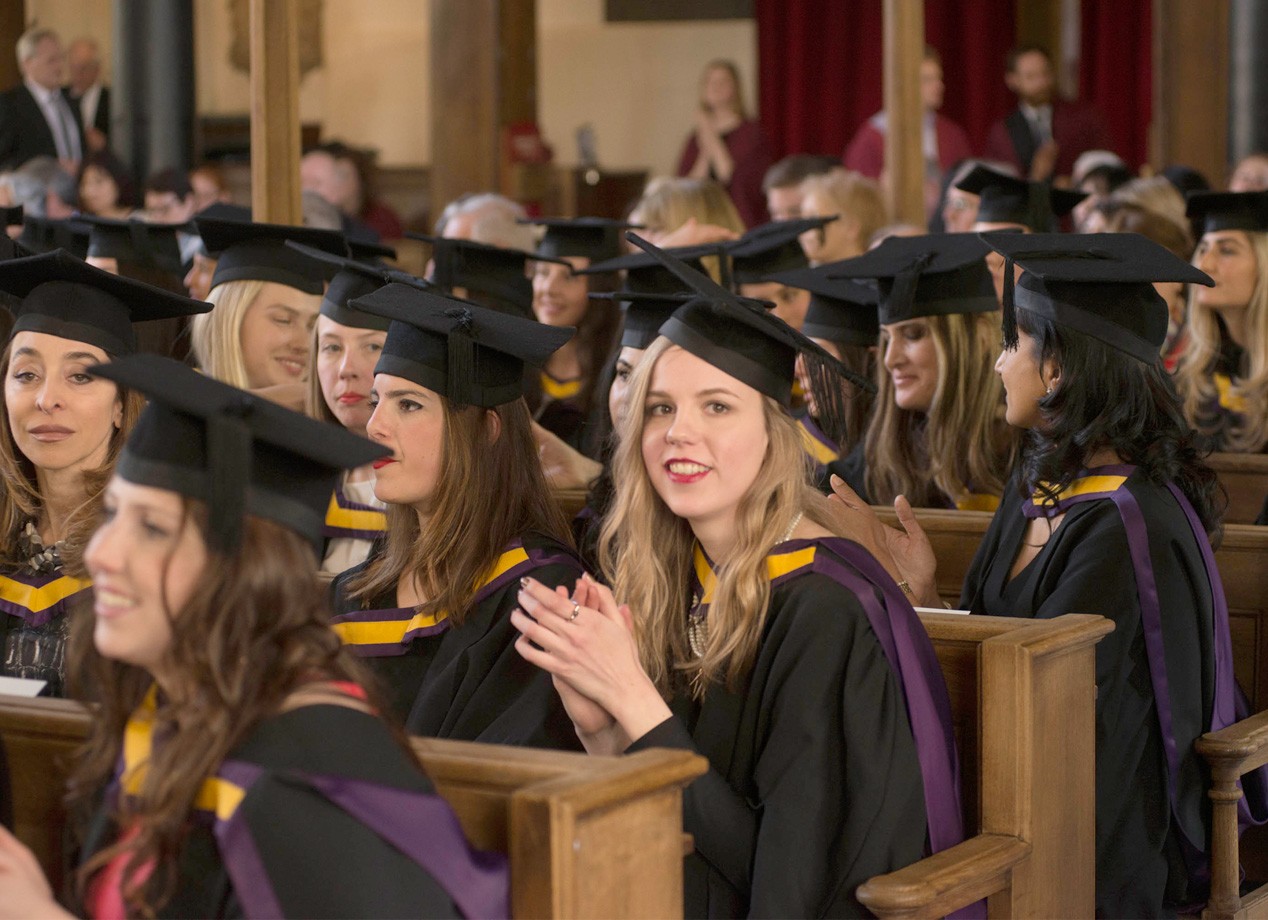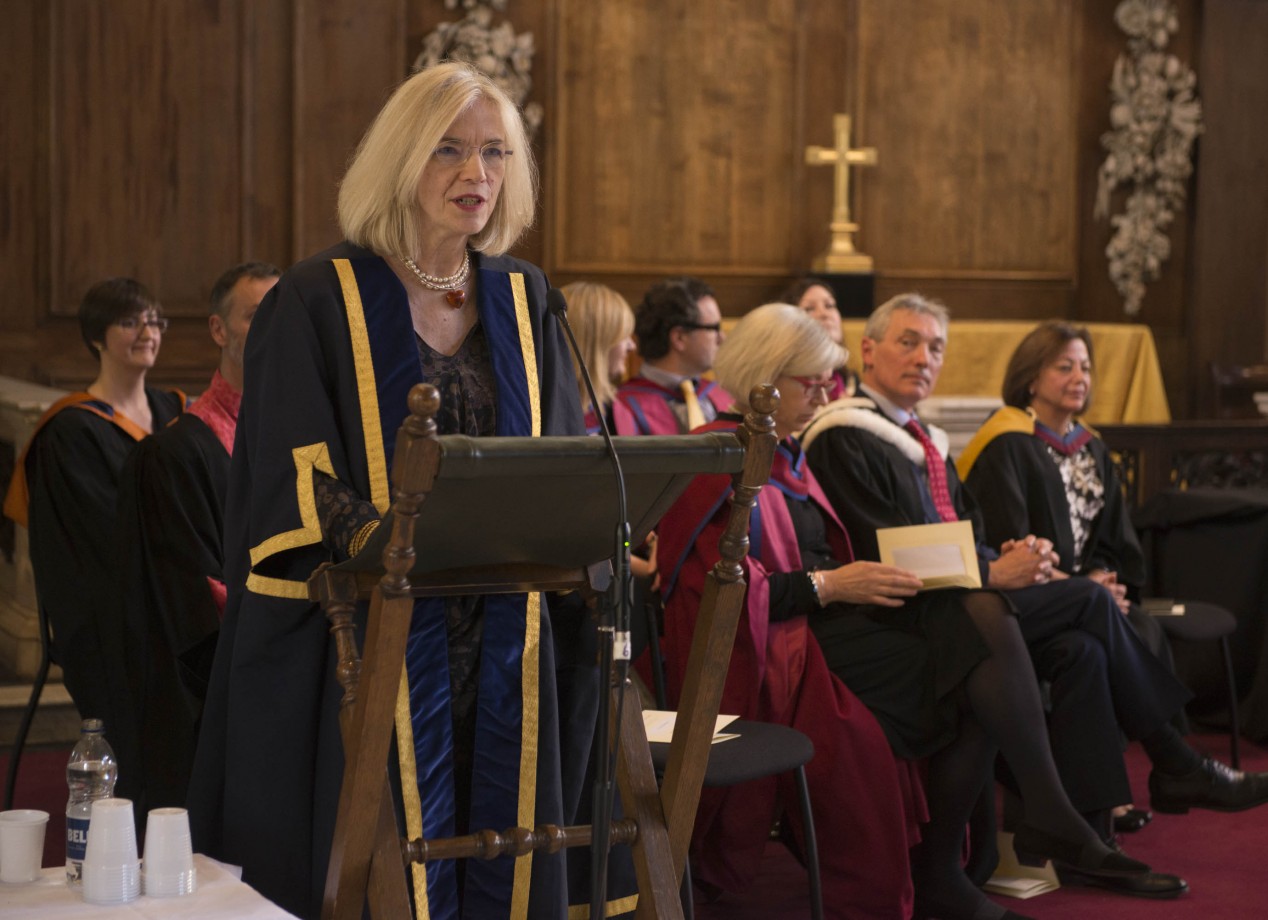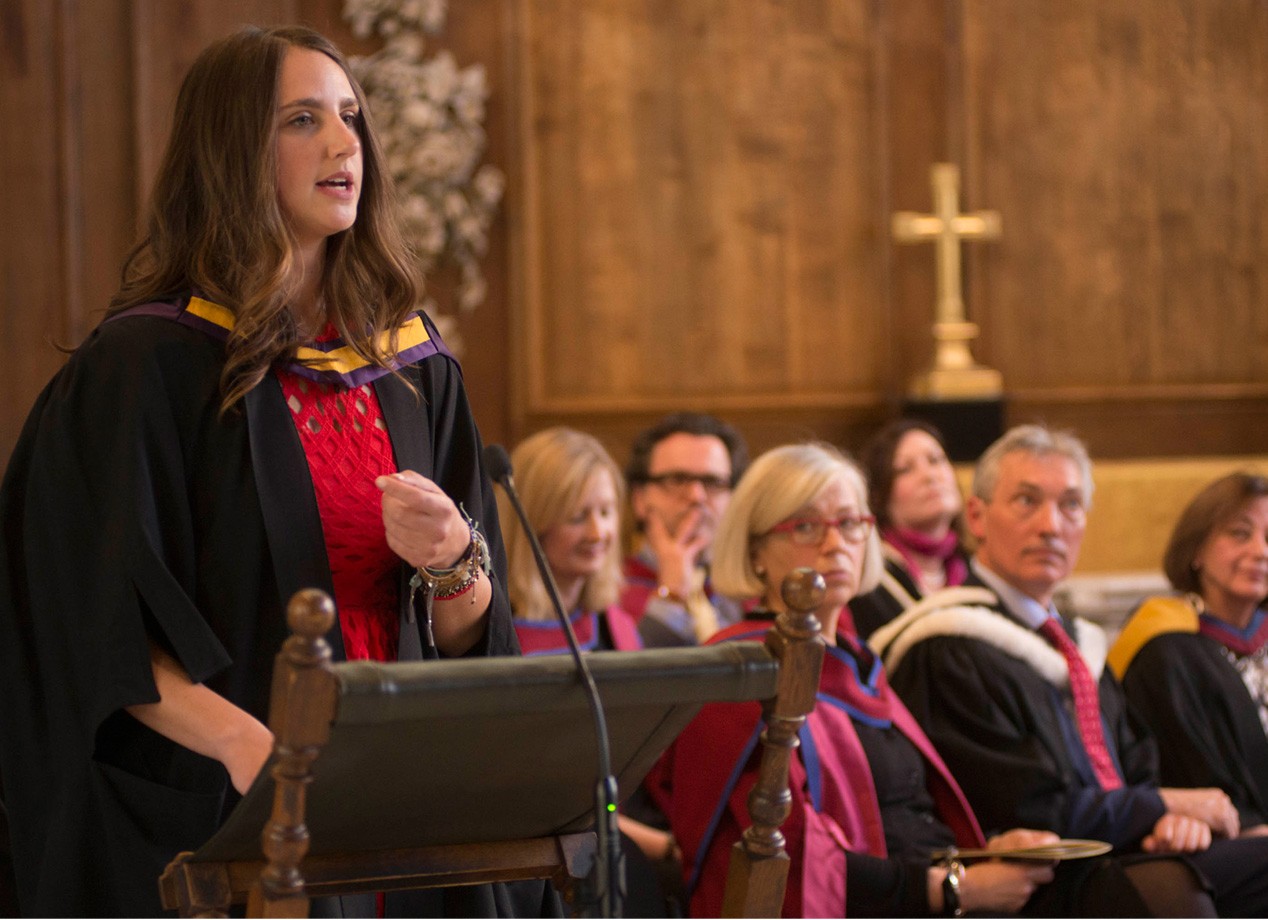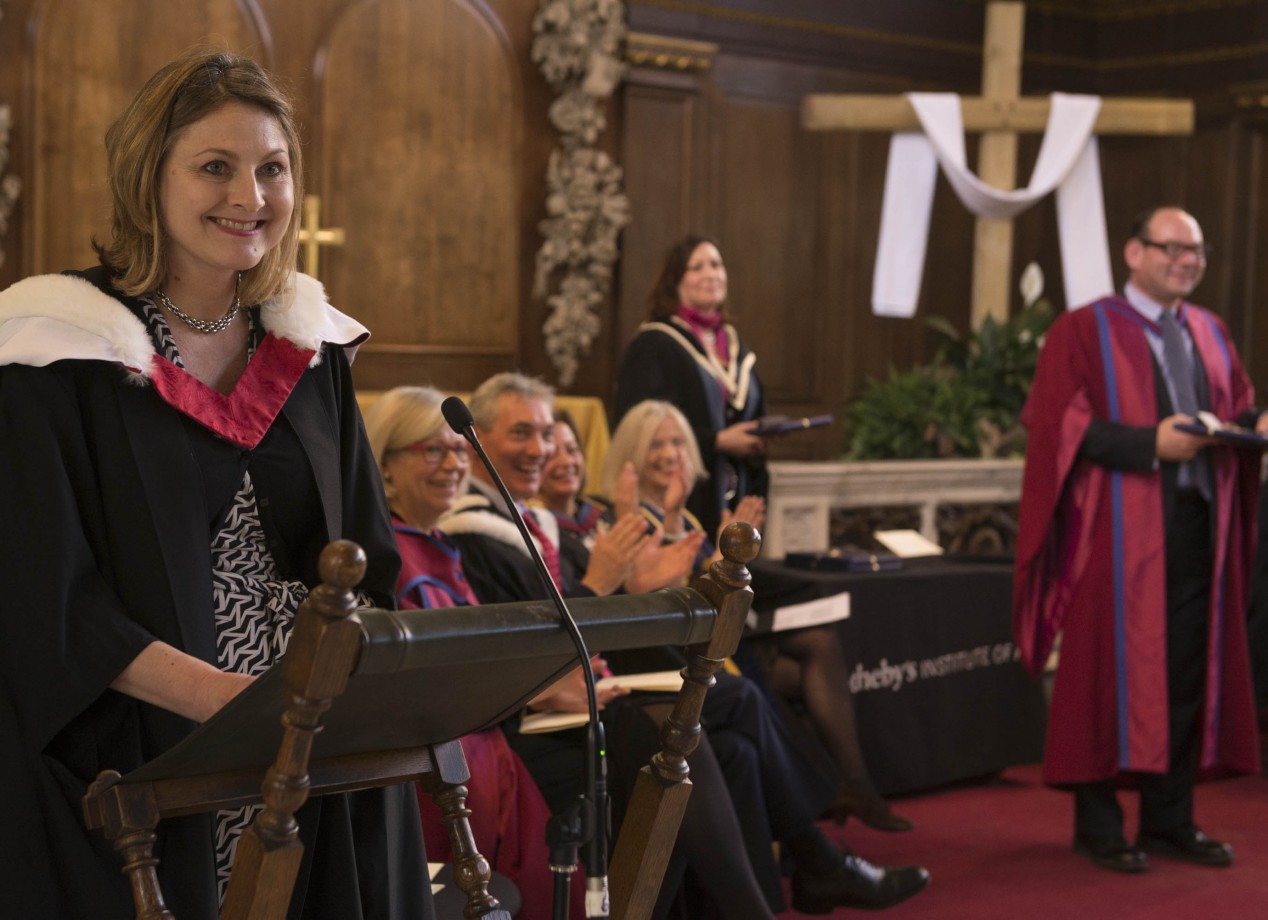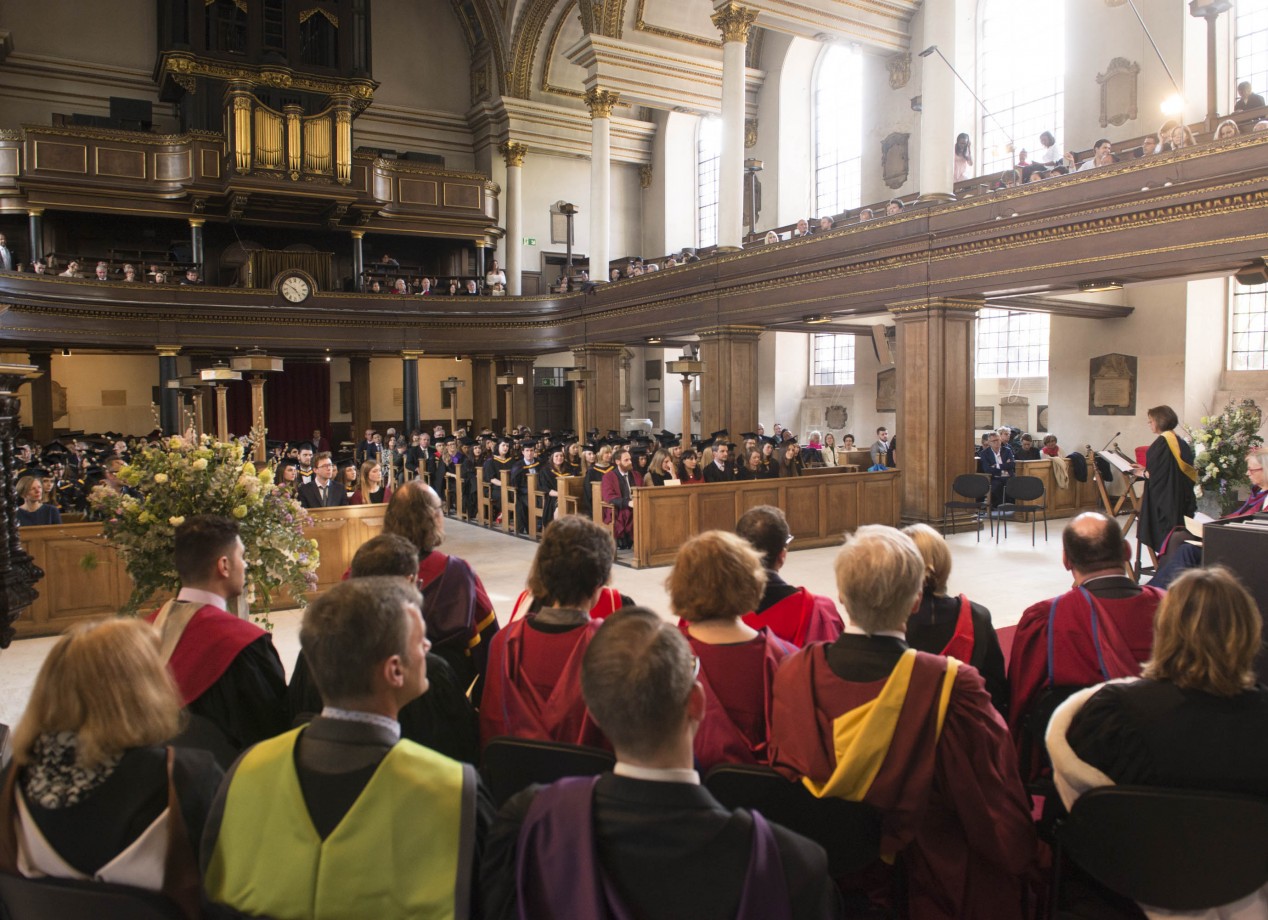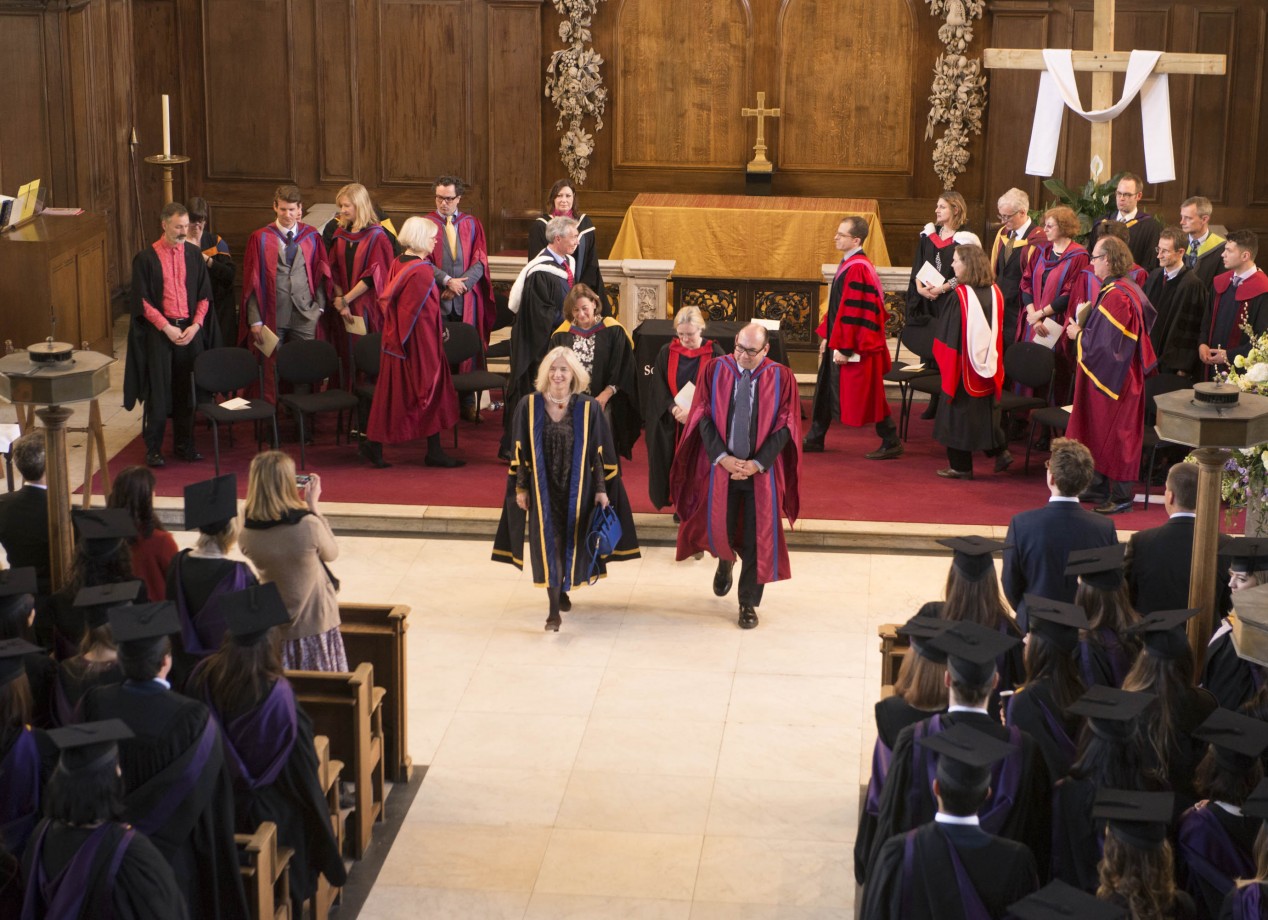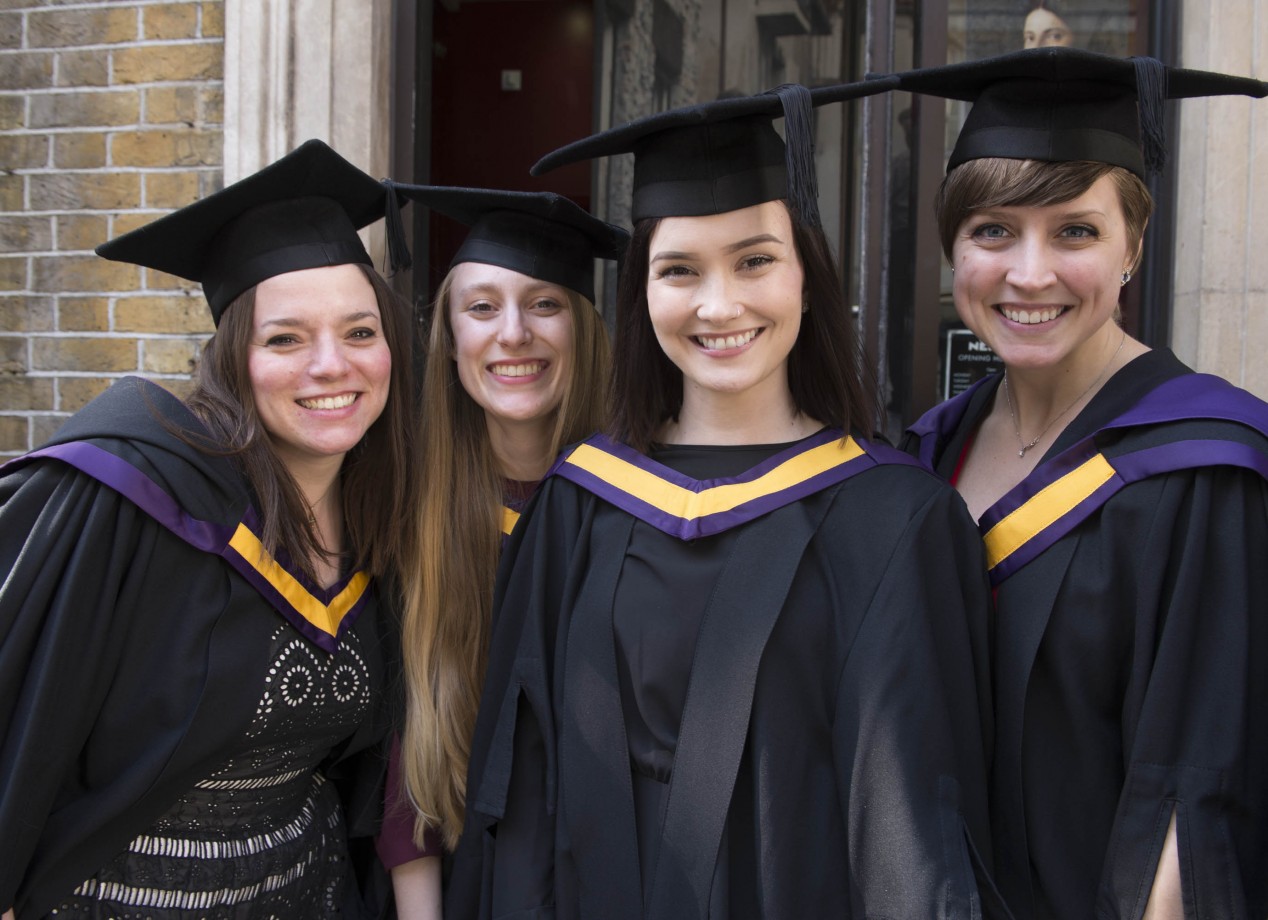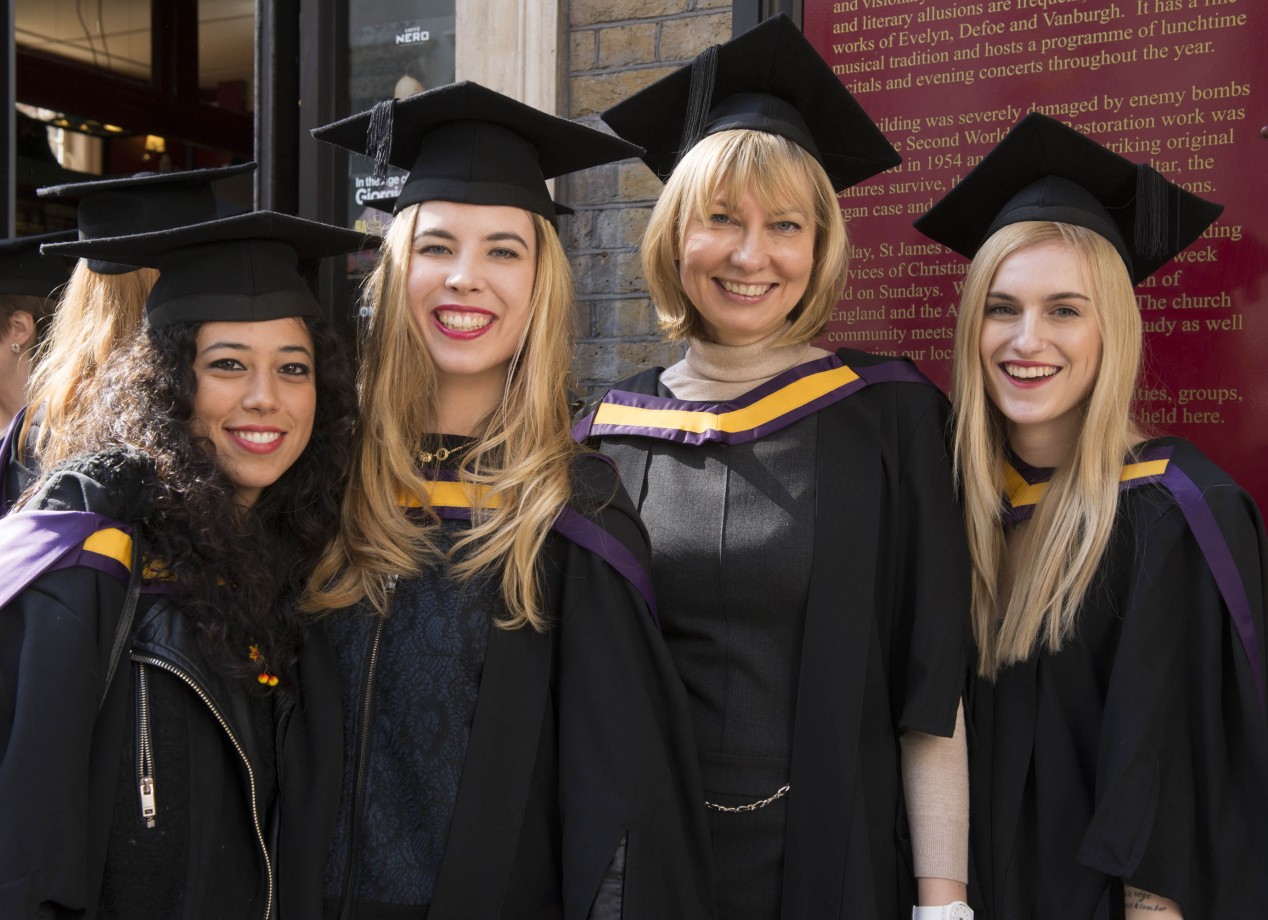April 29, 2016
Good Afternoon, Students, Families, Faculty Colleagues, Distinguished Guests
I am so pleased to be here today and to join in the celebration of both the accomplishments and the bright futures of today’s honorees – the graduating class. While your MA studies may have looked far too exciting and glamorous to others to be thought a properly rigorous preparation for a serious career –– I know that these degrees and diplomas have been won with long hours and hard work, exhaustive research and analysis, and intellectual challenge, to name just a few characteristics of your degree studies. You’ve weathered deadlines and self-doubt, balanced by inspirational teachers, “Eureka! moments” of discover and, ultimately, you’ve arrived here with a deep sense of satisfaction. Here’s the bad news: what comes next is more of the same. But here’s the good news: what comes next is more of the same!
What an extraordinary vocation you have chosen! You have already done what American political commentator and Rhodes Scholar Rachel Maddow advised a group of graduates a few years ago at a ceremony like this: “Do stuff you will enjoy thinking about and telling stories about for many years to come. Do stuff you will want to brag about." Lucky you!
Of course the general public is fascinated by what you do and what you know! The flood of press coverage, the explosion of art fairs, the scandals, the reality shows, the glamour, the celebrities, the soaring prices, international intrigue, million dollar paintings found in attics, forgeries and fakes, crimes and misdemeanors - why, the art world is as sexy right now as fashion was in the early 2000s! Which of you doesn’t have a friend or family member who’s asked you to take them to a museum or gallery or studio visit, to meet a curator or a collector or even an artist and show them “what it means,” to tell them what they should be seeing and whether the painting or the chair they want to buy is “good” or “worth the price” or a “good investment”? The thing is – you either do know the answer or – and I think that this is much more important in the long run - you are among the very few who know where to find it or who to call for it - and that’s what sets you apart. It’s not magic, it’s hard work – and not without its risks - but it’s thrilling. You have chosen a world filled with beauty and intelligence, with passionate participants and high stakes, a field with a long and rich history and an ever-changing present. With the inspired teaching and privileged access to real world experience you’ve had at Sotheby’s Institute, you will shape its future.
More than ever before, the art world is huge in its scope, complex in its intricacies and truly global in its reach. It is made up of untold numbers of individuals, organizations, institutions, sectors and subsets of sectors – and the boundaries between and among them are increasingly permeable. Today there are innumerable ways for talented and motivated participants like you to enter and evolve in the art world, as many of you have already proven.
And so, as the occasion demands, I offer a few pointers as you leap into the fray. As a life-long professional in and advocate for higher education in the arts, as the daughter of an architect, the wife of an artist and antique airplane restorer and the mother of both an architect and a very creative engineer, I am wildly enthusiastic about the visual world and the variety and complexity of its structures. I am enormously fortunate to have worked in an environment of beauty and intelligence, passion and curiosity, creativity and commerce. I treasure the experiences I’ve had watching enthusiasts become professionals and colleagues. So here is my short list of advisories; I’ll keep it to five, I promise:
1) Don’t be afraid of artists. This was the appeal made to Sotheby’s New York graduates several years ago by Anne Pasternak – then Executive Director of Creative Time, one of the foremost sponsors of public art in the US, and now Director of the Brooklyn Museum. Makers of all sorts are the lifeblood of the visual world and though you may not always speak the same language or see the world the same way, you are part of the same enterprise and bring a unique set of skills and perspectives. Some of you ARE practitioners and you know better than most that it takes a village (apologies to Hillary Clinton) to sustain the world of art. You all have a role to play as creator, advisor, curator, critic, buyer, seller, funder or supporter, generalist or specialist. Please don’t lose sight of the source of all this creative work – artists – be they starving, scheming or soaring – they are why it all matters.
2) Stick Around and Look Around. What you need to know is this: a career is a “life sport” – like skiing or bicycling or tennis. Or even table tennis. You know, something that you can learn when young and enjoy even late in life. A career is long – it’s a marathon, no – more like a triathlon - than a sprint. Your attitude and approach will change, the venue and the conditions too – but the excitement you feel, the satisfaction it gives, the continuous opportunities for invention will last for a very long time, hopefully forever. All careers evolve, they are cumulative, iterative – what appears to be a straight line rarely is. You need to watch for opportunities and not be afraid to shift gears: Anne Pasternak moved from outside the arts mainstream to inside; Lisa Dennison leaped from the heights of the non-profit world as Director of the Guggenheim to the so-called “dark side” as Senior VP at Sotheby’s in New York and found the new job “liberating.” With this unique perspective she has said that “people always think the art world is all about glamour and parties and lifestyle, but believe me, it’s a tough and competitive business on both the profit and non-profit side … There’s also a belief that the non-profit world is somehow not difficult or competitive, but this is not the case.” You’ll find your own place and the more options you consider, the more looking and listening you do – especially outside the familiar – the better your experience will be. Be flexible. Take chances.
3) Procrastinate. Yes, really. Yes, a brilliant career in the art world – well, any meaningful career – takes focus, furious focus and unrelenting effort. There are time and money constraints, there’s competition, there are goals and hopes and dreams. But we all need to force ourselves to take a break once in a while. To stop and smell the roses, look around, reflect, let fresh air into our thinking processes. Often the first idea isn’t the best one. Let yourself lower your standards for perfection periodically and not rush to completion. Numerous studies have shown (and as a serious procrastinator myself I hope this isn’t selective reading) that creativity and innovation are often linked to a slower, more organic thinking process. Give yourself the gift of time whenever possible.
4) Don’t be a dog. As the stakes have risen astronomically in the art world, it’s become truly dog-eat-dog, survival of the fittest, take the money and run. I don’t think that it is always like this or that it HAS to be like this - and I am enough of an optimist to think that you, who have had the privilege of both knowing about the less attractive corners of the territory and having the tools to maneuver differently can change the trajectory of our profession. Or at least that you will want to and will practice your craft honestly, generously and kindly. That you will be an open and straightforward communicator, an effective collaborator, an ethical participant in business and in interpersonal dealings. That you will be loyal to colleagues and organizations you care about and that you will share your expertise, your efforts and your knowledge generously. It may be challenging – but you’re used to that – and the rewards for doing so will be great.
5) It IS all in who you know - and what’s wrong with that? In what universe does it not matter who you grew up with, went to school with, worked and played and grew with? This is a glass-half-full thing. Don’t be negative or cynical about the need to know and be known. Get better at remembering names and faces and the stories and talents and connections that go with them. In particular, and starting right now, I urge you to recognize the importance of your Sotheby’s Institute network; here you have “found your tribe,” folks whose fascination with works of art is coupled with the desire for real world engagement with every aspect of their life cycle: creation, provenance, value, collection, ownership, critical heft, historic importance, thrill generation! Make no mistake about it – these classmates and the Institute’s alumni will be an invaluable, life-long resource. The people in this room – the man or woman sitting to your left and right – are the key to your future success and satisfaction. Make sure you know them and they know you and don’t lose touch.
And so, your courses at Sotheby’s Institute have been rich with content, historical context, expert techniques, real world context and tactics. Added to your aspirations, your creativity and your discipline, this education has set you up for success and satisfaction. Shonda Rimes, an American television producer and writer who fought long and hard for her accomplishments said something telling and appropriate for you about the meaning of success: "I think a lot of people dream…And while they are busy dreaming, the really happy people, the really successful people, the really engaged, powerful people, are busy doing."
So get out there and do it. The art world is waiting for you.
Lesley A. Cadman
